Up Next

The Chinese Grand Prix would have taken place this Sunday had it not been for its cancellation from the Formula 1 schedule for the fourth successive year.
The Shanghai race has been absent since the COVID-19 pandemic began in 2020, while every other 2019 race that was temporarily missing has returned.
We’ve taken the opportunity to look back at some of the most interesting moments from the 16 races that have taken place at the circuit, away from the most iconic like Lewis Hamilton’s 2007 disaster, Red Bull’s maiden victory and Michael Schumacher’s final win to focus on some that you may have forgotten.
Buemi’s lost wheels
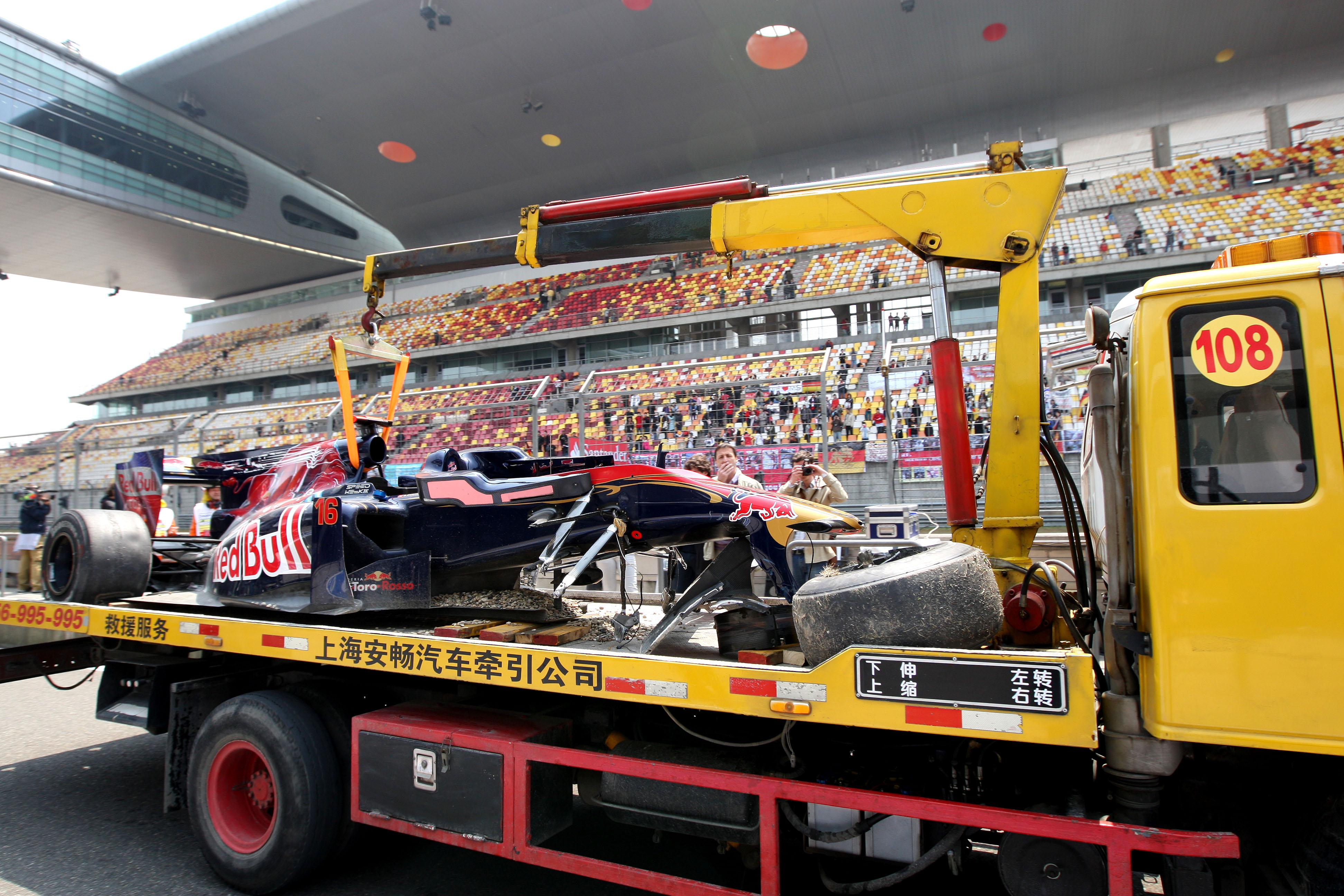
Probably one of the most attention-grabbing incidents in Formula 1 free practice history came in FP1 at Shanghai in 2010, when both the front wheels flew off Sebastien Buemi’s Toro Rosso on the approach to the hairpin.
While you will have seen the footage, The Race’s Sam Smith asked Buemi to talk through what happened on the day that produced probably the most famous – or should that be infamous – moment of his F1 career.
“In F1, you [the cars] are easily overweight at the start of the season,” Buemi recalled. “So then you try to make the car lighter. We brought new parts, the uprights. From what I remember, they were obviously lighter and we had no time to put them on the [test] bench.
#OnThisDay in 2010… 🤯🤯🤯#F1 pic.twitter.com/RCWkOL6m6H
— Formula 1 (@F1) April 16, 2022
“When I braked at the highest speed of the track, obviously it broke and as soon as it broke on the right, all the force goes to the left.
“It looked spectacular, but if there was a place for it to happen that was a perfect one because I just went straight and there was good run-off.
“It was quite funny as I kept turning the wheel even though I had no wheels left! By the time I actually properly realised what happened, the car was stopped. It was all OK for me from an impact point of view.”
Unsurprisingly, Toro Rosso reverted to the old-specification uprights for the rest of the weekend. – Edd Straw
A wild 2005 finale
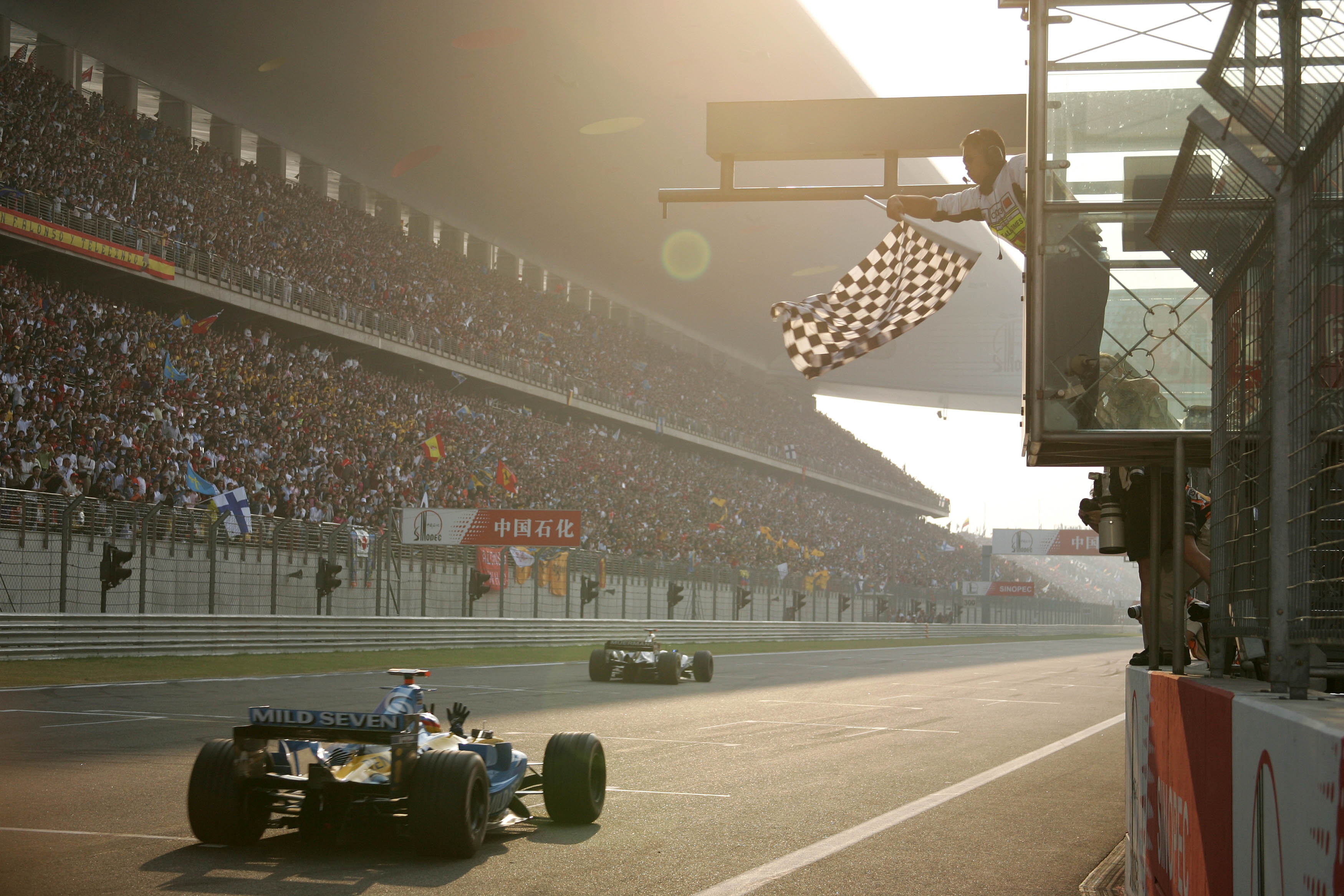
Before it moved to its now traditional early-season date, the Chinese GP served as F1’s season finale for one year in 2005.
It proved to be a chaotic affair before the lights even went out with Michael Schumacher – at the end of a miserable year for his once-dominant Ferrari outfit – colliding with the Minardi of Christijan Albers shortly after leaving the pits to make their way to the grid for the start.

Schumacher was reprimanded but both drivers were able to take the start in spare cars – not that it lasted long for Schumacher, who spun his Ferrari out of ninth and into the gravel while running under the safety car.
That safety car had been called when Juan Pablo Montoya’s McLaren ran over a loose drain cover on the exit of the Turn 10 left-hander. Montoya had to pit for a new tyre and retired soon after with an engine problem.

Montoya’s removal from third place somewhat flattened the fizz created by the two-point gap between Renault and McLaren at the top of the constructors’ table heading into the final round.
But the race is still memorable for bringing down the curtain on a bizarre season without tyre changes at pitstops, without the Ferrari juggernaut, with a new world champion and featuring the last sight of Jordan, Minardi or V10 engines (or at least ones that weren’t toned down in the back of a Toro Rosso). – Josh Suttill
Schumacher’s lost comeback podium
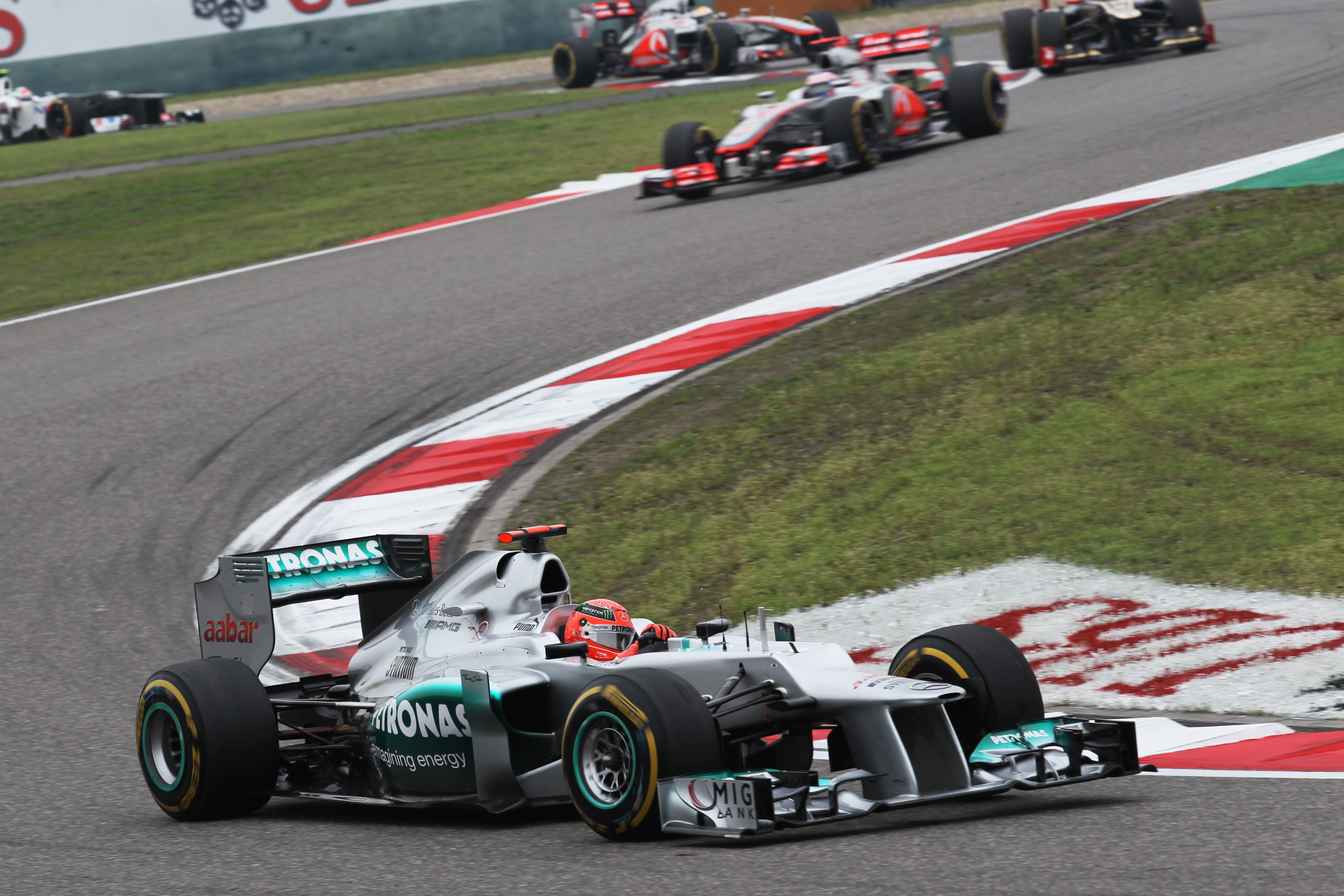
The best result of Michael Schumacher’s ‘second’ F1 career after returning with Mercedes was third in Valencia in 2012. But it’s often forgotten that earlier that year he was on course for a second place before a pitstop blunder put him out of the Chinese Grand Prix.
Schumacher qualified second behind team-mate Nico Rosberg, with the pair running 1-2 for the first stint of the race.
With Rosberg having a comfortable margin up front, partly thanks to the slower Schumacher holding up the chasing pack, Mercedes brought its second-placed car in first. While Schumacher was under threat from those behind, he was on a two-stopper with others on a three so was still in a position where he could have followed Rosberg home had the race played out normally.
Instead, at his pitstop, the right-front wheel wasn’t correctly torqued up and Schumacher was instructed to stop while on his out-lap. That made his the only retirement from the race.
Whether he’d have finished second is open to debate, but the pitstop error denied him what might have been a rare late-career podium. – ES
Vettel’s instant Toro Rosso redemption
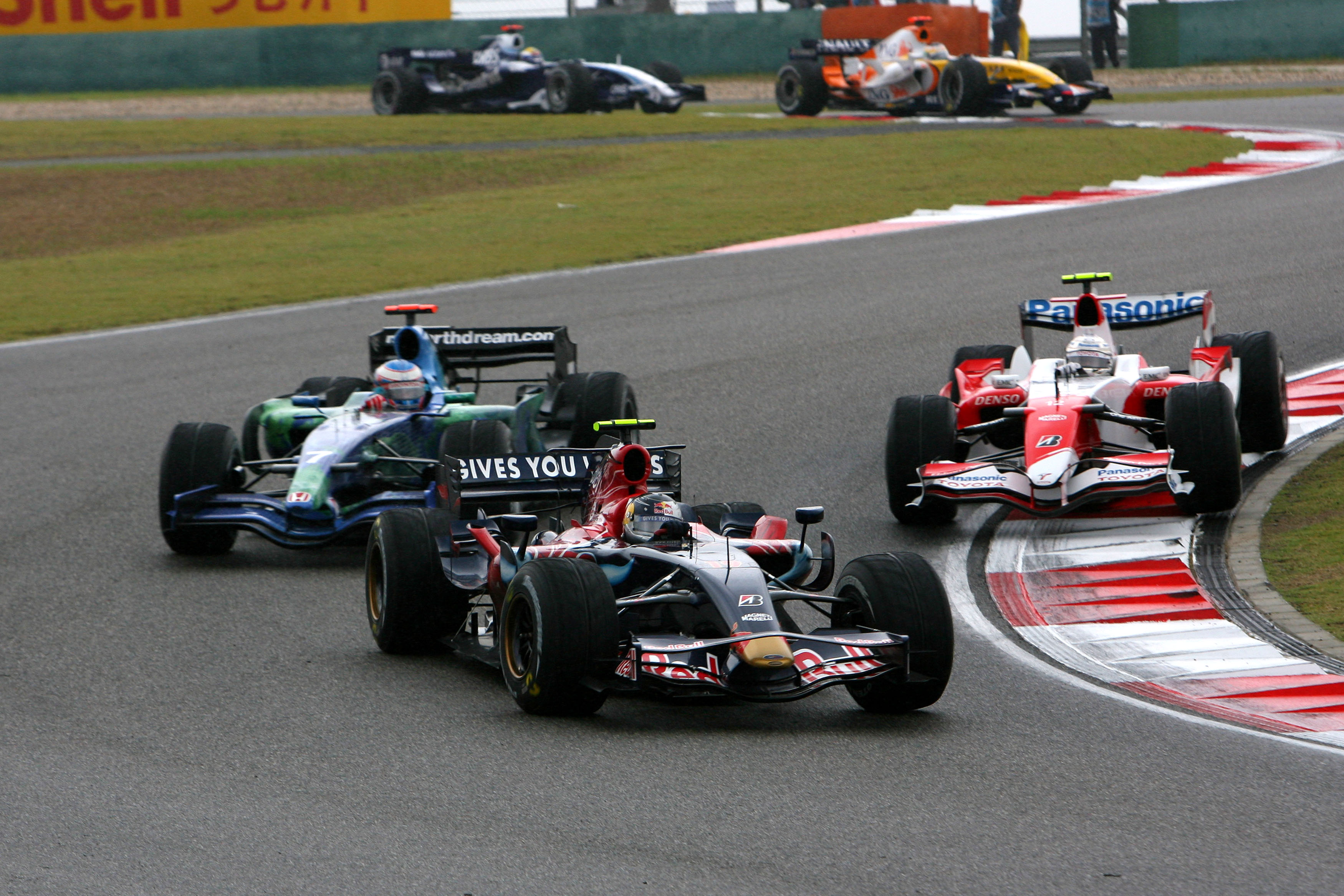
“Kids with not enough experience, doing a good job, then they f*** it all up.”
There were no accompanying images of Mark Webber as he uttered that quote, but they weren’t needed to illustrate just how angry he – embattled by food poisoning to boot – was about his exit from second place in the Japanese Grand Prix in 2007.
The ‘kid’ in question? One Sebastian Vettel, who’d been on course for third until ruining the day for himself, his Toro Rosso team, parent team Red Bull (even if it salvaged a fourth through David Coulthard) and future team-mate Webber by running into the back of Webber while under the safety car and squandering what looked a sure-fire two-three finish.
Anyone expecting any sheepishness at the next race in China, well…Vettel wasn’t exactly in the thick of it, but certainly let his driving do the talking.
Vettel was actually the slowest of the quartet of ‘Red Bull’ drivers in qualifying, placing 12th, but having received the reprieve of a reprimand in place of a 10-place grid drop for the Webber clash he duly copped a five-place penalty for impeding Heikki Kovalainen in qualifying.
But he came good in the race. He was up four places through the first corners, into the top 10 by lap seven, and then let the race come to him. Fuelled for long enough, Vettel was able to wait until mid-distance to switch straight from intermediates to soft tyres and was back out again until the finish.
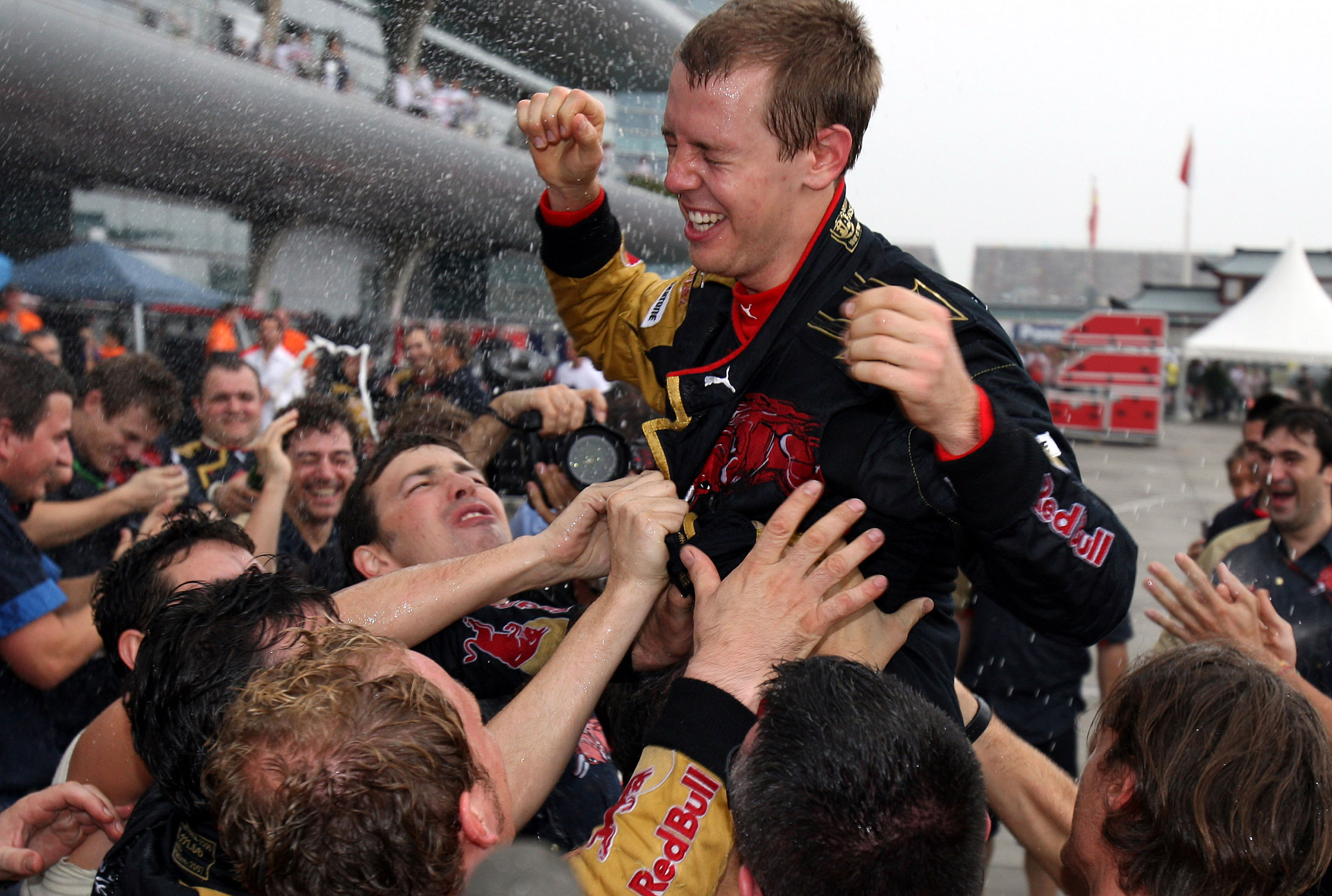
The circumstances weren’t there for a repeat of his top-three running in Japan, but that strategic move – every other points scorer had to stop twice – Lewis Hamilton’s painful-yet-limp pit-entry exit, and a late pass on Jenson Button gave Vettel fourth at the finish, with Vitantonio Liuzzi’s sixth making it Toro Rosso’s best F1 result at that point.
It was an immediate response to the disappointment of Fuji and to any critics expecting a “f*** it all up” repeat, and a first complete performance from a driver who’d go on to become a four-time world champion. – Jack Cozens
Alonso’s unexpected DRS use
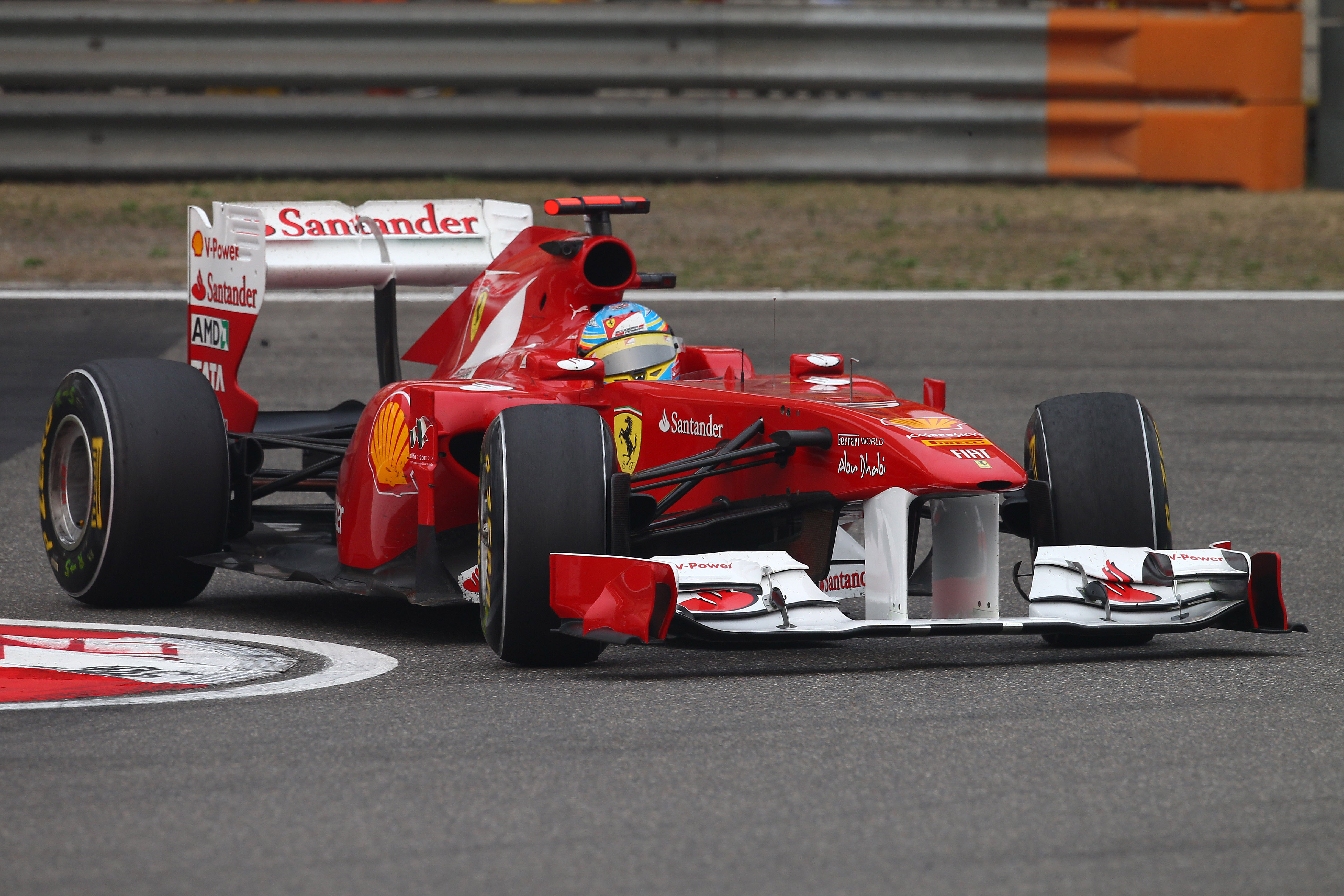
The 2011 Chinese Grand prix was only the third race of F1’s DRS era. But even with such unfamiliar technology, it was obvious that the DRS on Fernando Alonso’s Ferrari had opened in the wrong place.
There was a single DRS zone in China that year, located on the blast to the hairpin. But unexpectedly, Alonso’s DRS opened on lap 23 on the short straight between the hairpin and the last corner.
But Alonso was allowed to keep his seventh-place finish despite the illegal use of the DRS. This was because of what Ferrari described as “a late enabling signal received from the FIA”.
This meant that Alonso’s DRS wasn’t made available when it should have been, only coming online 400 metres into the DRS zone. Because of that, it was then activated on the run out of the hairpin. – ES
Schumacher’s bizarre post-title blip
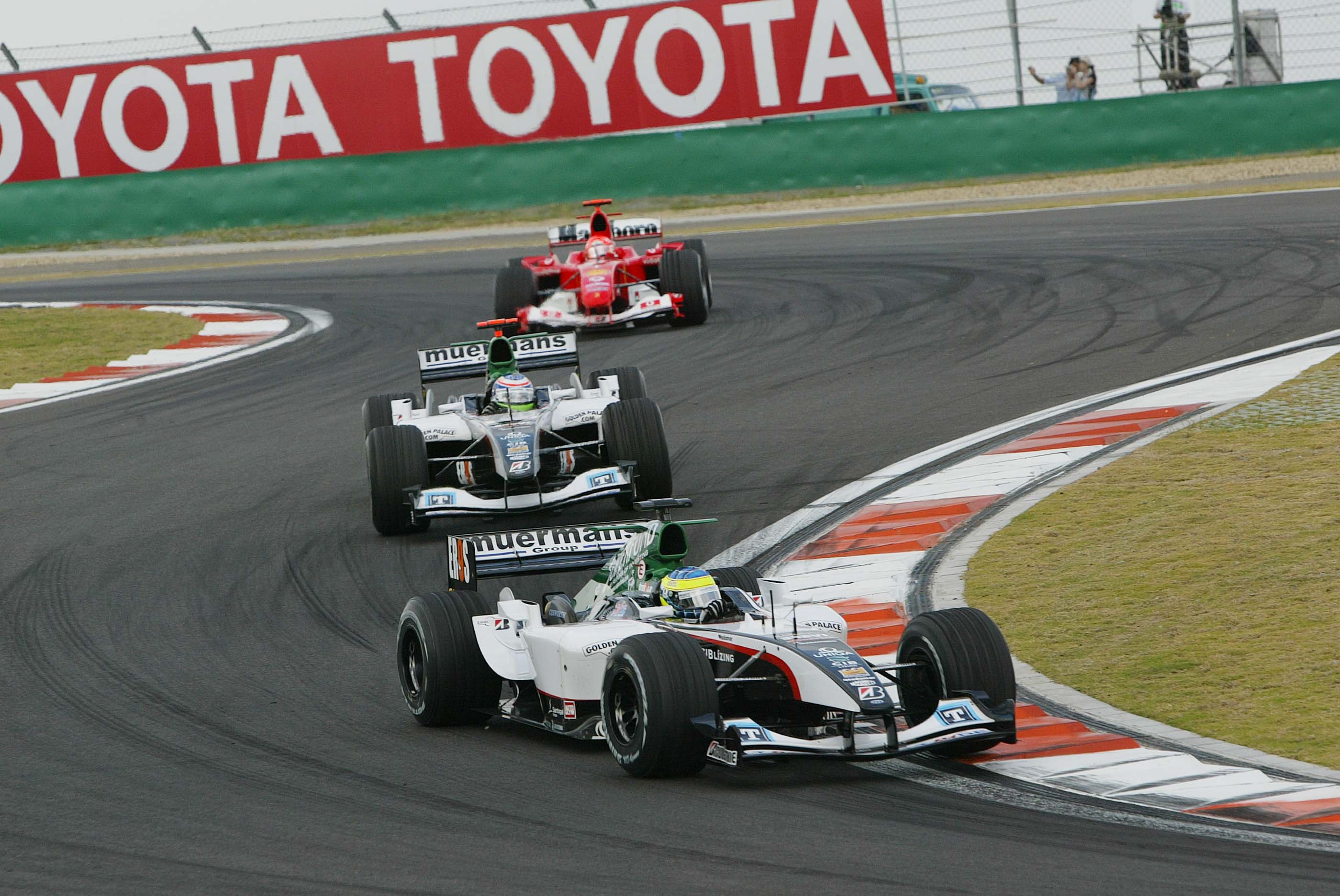
Michael Schumacher saved his most dominant F1 title victory for last when he won 12 of the first 13 races of the 2004 season and then picked up second at Spa to clinch the championship in late August.
But his post-title form was bafflingly poor and it was at its worst during the first ever F1 race weekend at Shanghai – the start of Schumacher’s rollercoaster relationship with the circuit.
A qualifying spin at Turn 1 put Schumacher out of qualifying and this was followed by an early-race spin, a collision with Christian Klien, and a puncture that all resulted in him finishing in 12th place.
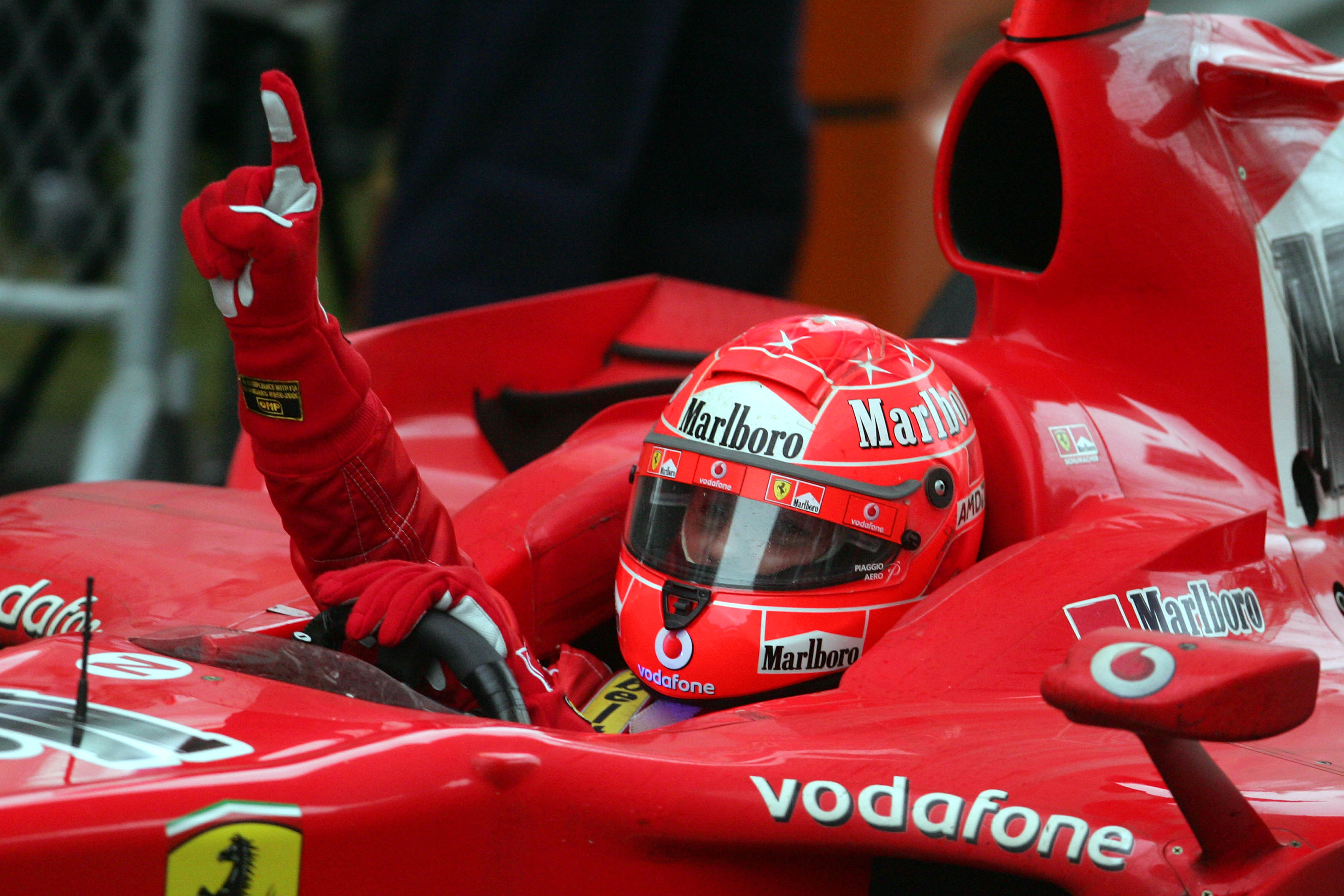
Considering his nightmare race a year later it seemed China would be the unlikeliest of destinations for both his last F1 career win in 2006 (pictured above) and (almost) the most competitive race of his F1 comeback in 2012. – JS
Vettel’s Shanghai flair
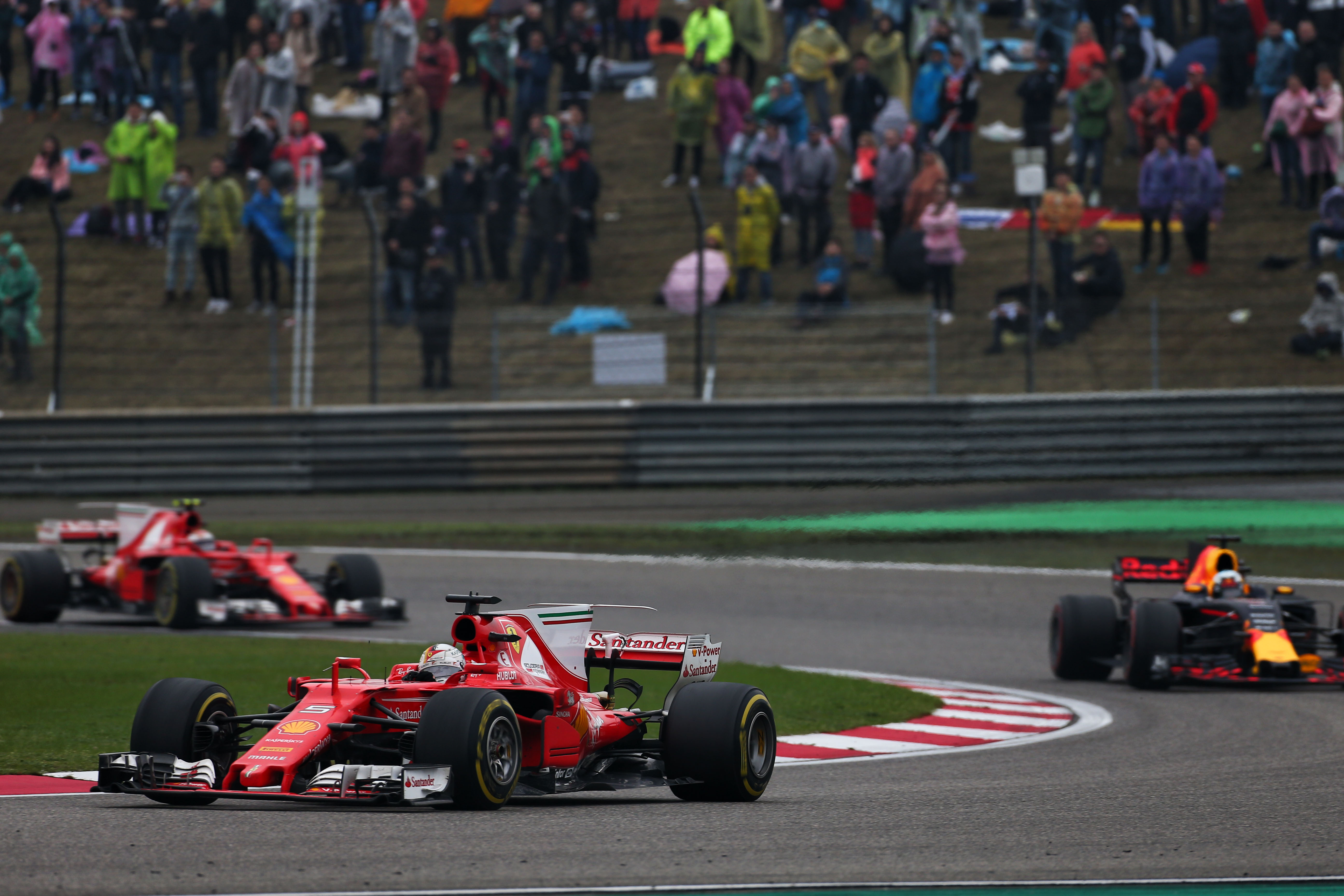
Beyond his 2007 showing, Vettel has been one of the most entertaining drivers at Shanghai – whether it’s his rapid, time-busting charge to chase down Hamilton for the final podium spot at the end of the 2013 race or a pair of incredible overtakes in 2016 and 2017.
In the 2016 race, Vettel passed Nico Hulkenberg and Carlos Sainz on the approach to the pitlane in a “galaxy brain” move that I’d never seen before.
And in 2017, he beat Daniel Ricciardo at his own game with a beautiful send around the outside of Turn 6, the pair banging wheels as they went side-by-side through the sweeping S bends.
For highlight reel moments, Vettel is up there among the best China’s provided over the years. – Dre Harrison





